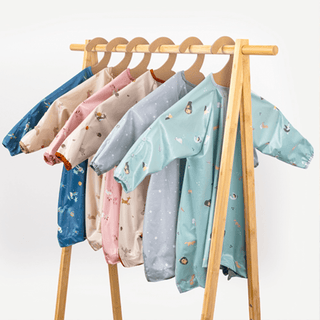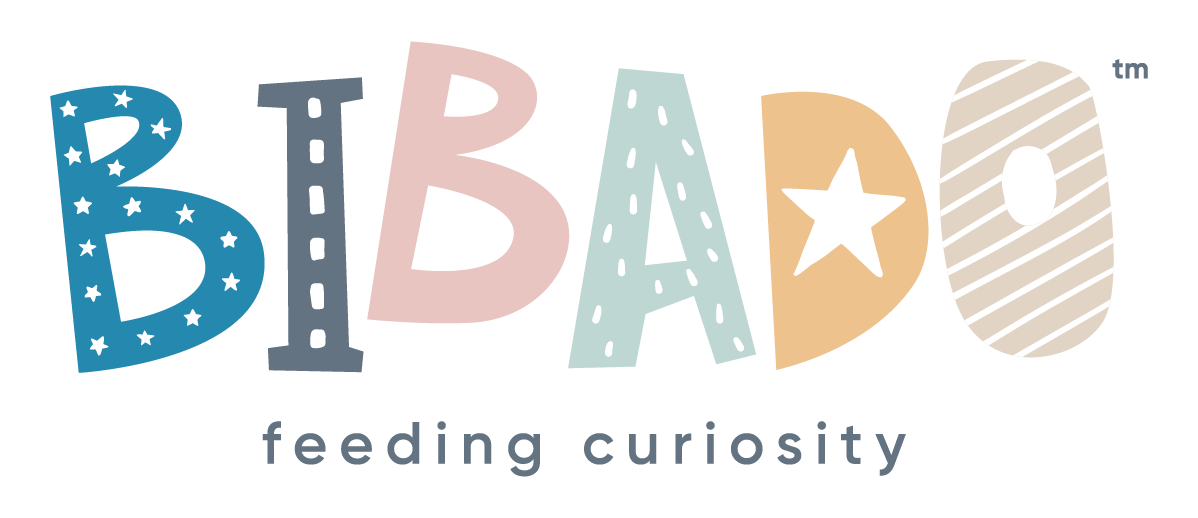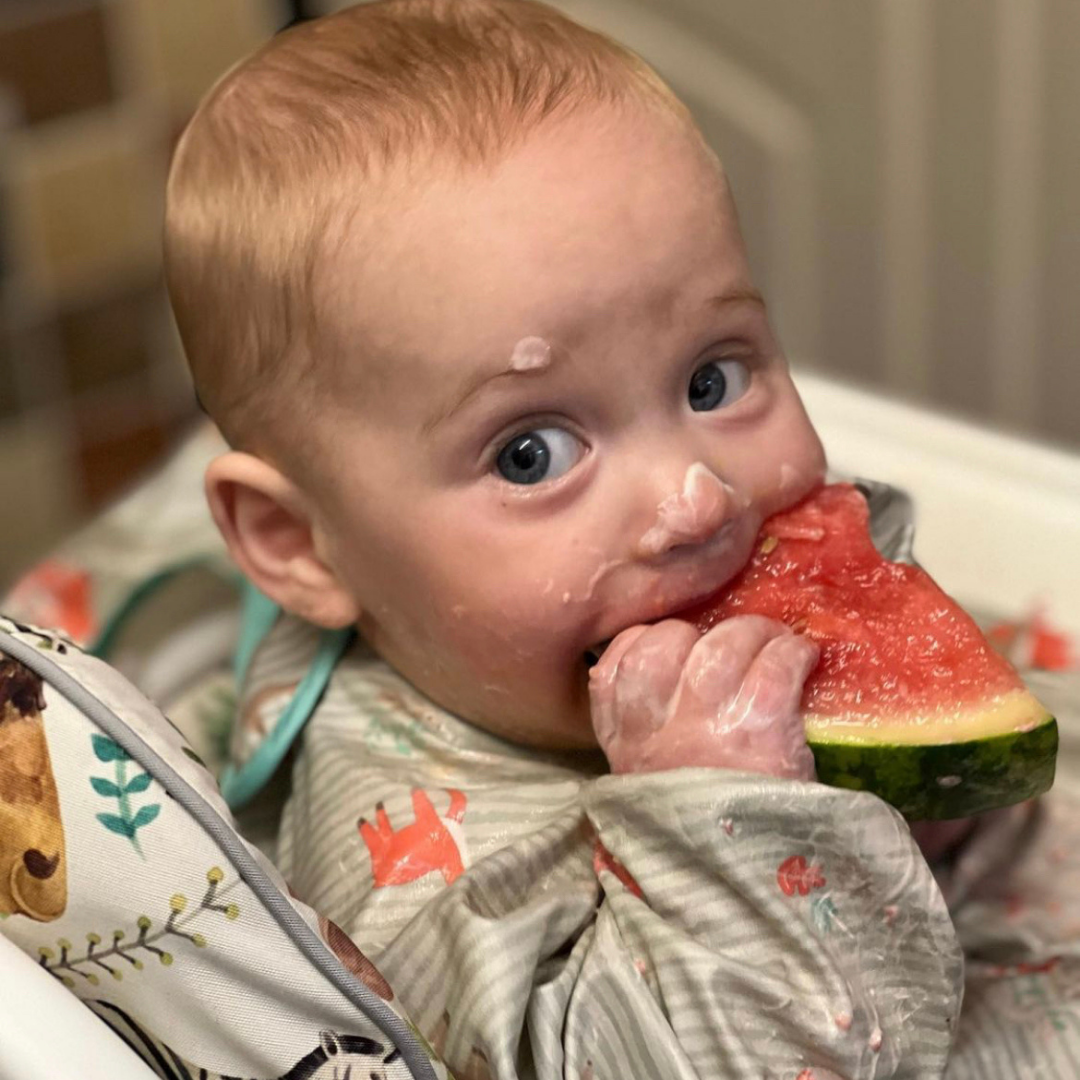Mealtime adventures are better with Bibado! Let our award-winning products make a difference to your weaning journey.
 Shop Now
Shop Now


Join us on a new flavour adventure as we talk to mum of 3 and Solid Starts founder Jenny Best on why introducing a wide range of flavours and textures early on is so important, along with some great tips on how to do it.

Join us on new flavour adventure
The world of weaning and introducing flavours to your little one can be a very overwhelming place to be. So we spoke to mum of three and founder of Solid Starts Jenny Best on our Feeding Curiosity podcast, and asked for her top tips on how to introduce flavours right from the very start of your weaning journey. Jenny is a baby led weaning expert, as well as a food and farming enthusiast. She launched the hugely successful Solid Starts food database for babies during the pandemic to help parents navigate through the noise and chatter around weaning.
Why is exploring flavours and textures so important when weaning?
Jenny: It is massively important and something parents are becoming more aware of now.
Many parents will start with infant cereal or purees for the first couple of weeks to ease themselves into their weaning journey, but when babies are 9 months plus and are still eating textureless purees, a lot of problems are going to follow such as picky eating and a resistance to new textures and flavours as well as this they are at risk of jaw weakness, even tooth eruption issues. So starting with these right from the start really sets your little one up for feeding success.

Should I start with finger foods?
There are massive advantages to starting weaning with finger food first. From oral motor skills development to preventing picky eating and learning how to become a safe eater. When an infant first begins their finger food journey, the goal is not the consumption of solid food but rather the development of oral-motor skills and exposure to a wide array of smells, textures, and tastes. As babies learn to chew and swallow, they begin to exercise different muscles — such as the ones that move their tongues to the side of their mouths. Around the 6 to 7 month mark, the tongue thrust begins to disappear, and with some practice, babies develop new tricks to break down the food and move it backwards to swallow.
There are two key movements that babies need to learn in order to be able to eat effectively. Both of these are helped by introducing finger foods which require biting and chewing early on:
Jenny explained to us the way to understand how this works is to think about putting apple sauce on your tongue. You wouldn't move it to the side to chew it, you would just swallow it. So if you want your child to become a safe eater faster, you actually need to bite the bullet and offer them really resistive foods either whole or in finger sized pieces.
“One of Jenny’s best tips for babies who are not interested in finger food - typically babies who have been spoon fed for a while and are having trouble leaping over that gap to self feeding - is to offer the food from your mouth. It sounds kind of gross and weird, but it is like the hundred dollar ticket in the feeding therapy world.”
How can I offer a variety of food without over complicating it?
Jenny: Just like us babies and toddlers love choices. If you went out to eat at a restaurant and someone just delivered the food to you and you had no say in it, you might not go back to that restaurant again. But don’t worry - you can create some artificial choices without becoming a chef.
Look for how you can create some kind of choice on the plate, and that'll often be the thing that babies need or toddlers need to to go ahead and pick up one. A good example of this would be to take a carrot and serve that carrot both cooked and raw at the same time.
“Jenny suggests taking one food and offering it in a variety of ways”
Try not to eat the same thing every day, and try not to serve the same thing to your child more than twice a week. From a preventing picky eating perspective for example if your child loves bananas, at some point your child's going to tire of those bananas. Even the most favourite food can fall out of favour if it's served too often, you won't you won't believe it because your child will kind of give you these indications that they can eat bananas forever. So really try to offer a good variety of foods.

Are there any ways that you can encourage babies to be more adventurous with food?
Jenny: From about 6 to 11 months old, babies are wired to explore orally so they're going to put a lot of things in their mouth, and teethe on everything they see. Because of this, you really want to capitalise on the opportunity and introduce as many foods as possible, ideally before their first birthday. By exposing them to a wide variety of food early on (and more than once), they become more familiar with it and know what they do and don’t like. After 12 months old this becomes harder as children can develop a “neo phobia” to new foods and they are going to whittle down the number of things that they eat and get very selective. So whereas they used to taste everything, all of a sudden they just like ten things or they have a really strong preference of white bread versus wheat bread or this versus that. 6 - 12 months really is a great window of opportunity to introduce as many new foods and flavours as possible to your baby.
“Did you know that the longer a child is on bland textureless food for, the more at risk they are of jaw weakness and tooth eruption issues as well as developing an aversion to new tastes?"
My baby screws their face up at new tastes, does this mean they don’t like it?Not always. Babies need to try a food a lot of times before they know if they are going to like it or not. Their palettes are brand new and every taste is an exciting explosion of flavour in their mouth. But we as parents often misinterpret babies and toddler reactions to food as them not liking it.
One of the foods that gets the greatest reaction is lemon, and just like us if we bit into a lemon we would find it quite sour and make a face. This doesn’t mean we don’t like it just that we are reacting to this flavour.
So what we want to do is make sure we give babies a space to have those reactions without assuming that it's because they don't like it. When you’re introducing a new food to your babies, start slowly and work your way up.
Jenny suggests introducing the ‘naked’ food first so they know what it tastes like alone before adding spices and other flavours.
A good way to do this is by introducing something like cayenne pepper on a mango pit or other sweet food to offset the heat that it has. You can introduce almost any flavour that you want, but be prepared that your baby will have a strong reaction to the new taste.

“The best thing you can do is to offer a wide variety of food, and allow them to have that reaction without interfering too much. Watch the sensory experience that they're having and you're going to see a range of expressions as they discover this new taste.”
Remember introducing flavour is a wonderful thing and something not to be afraid of. Introduce the flavours and textures and enjoy raising a happy mealtime adventurer together.
Follow us for more delicious, nutritious bite-size Bibado goodness